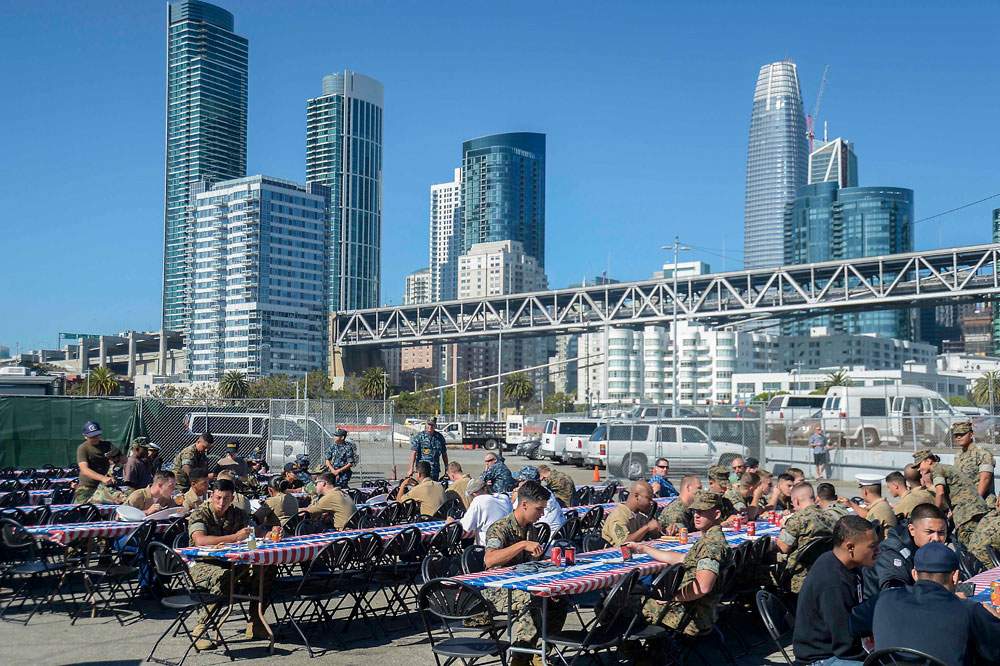I always hear from San Franciscan locals about how The City was once a Navy Town. That before Silicon Valley transformed the city into an expensive techpreneur playground, it was a working-class community that in turn transformed the war effort for the United States. What a strange thought, Polk Street filled with sailors and Army MPs patrolling the Embarcadero. All anyone in the City knows today of that era remains Treasure Island, a Navy installation ravaged with radioactive waste closed by the BRAC Act in 1995 and embroiled in redevelopment hell. The former base gate sign still greets you “U.S. Naval Station, Treasure Island.”
Bits and pieces litter the Bay Area region as well. Moffett Field in Sunnyvale is a bizarre empty wasteland in a region reeling from a housing shortage. It hosts an enormous airship hanger, a peculiarly tall steel structure that resembles a flan. Oakland Army Base is an ambiguous seemingly endless tract of bayshore land that denies Oakland residents access to the waterfront. The many long warehouses hastily constructed after Pearl Harbor lay mostly empty, waiting to be demolished. Shipyards at Hunter’s Point, Richmond Point and Mare Island are now neighborhoods and businesses. Older installations persist too, Fort Mason, The Presidio, and Angel Island. Alcatraz was originally a military prison.
I hope to reveal and peel back these complex historical layers through an urban studies lens. Why are these sites relevant and how do they affect us today. Though the wars that shaped the Bay Area are past, we are still human and still with conflict. Cities still serve as the means of production for war-time effort and there may be a time when cities may be re-activated. In the 2015 Novel “Ghost Fleet” authors August Cole and P. W. Singer imagine San Francisco once again becoming home base to U.S. naval forces and the many installations seen today returning to their war-time origins. The vestiges of war can be ghosts of the future.
